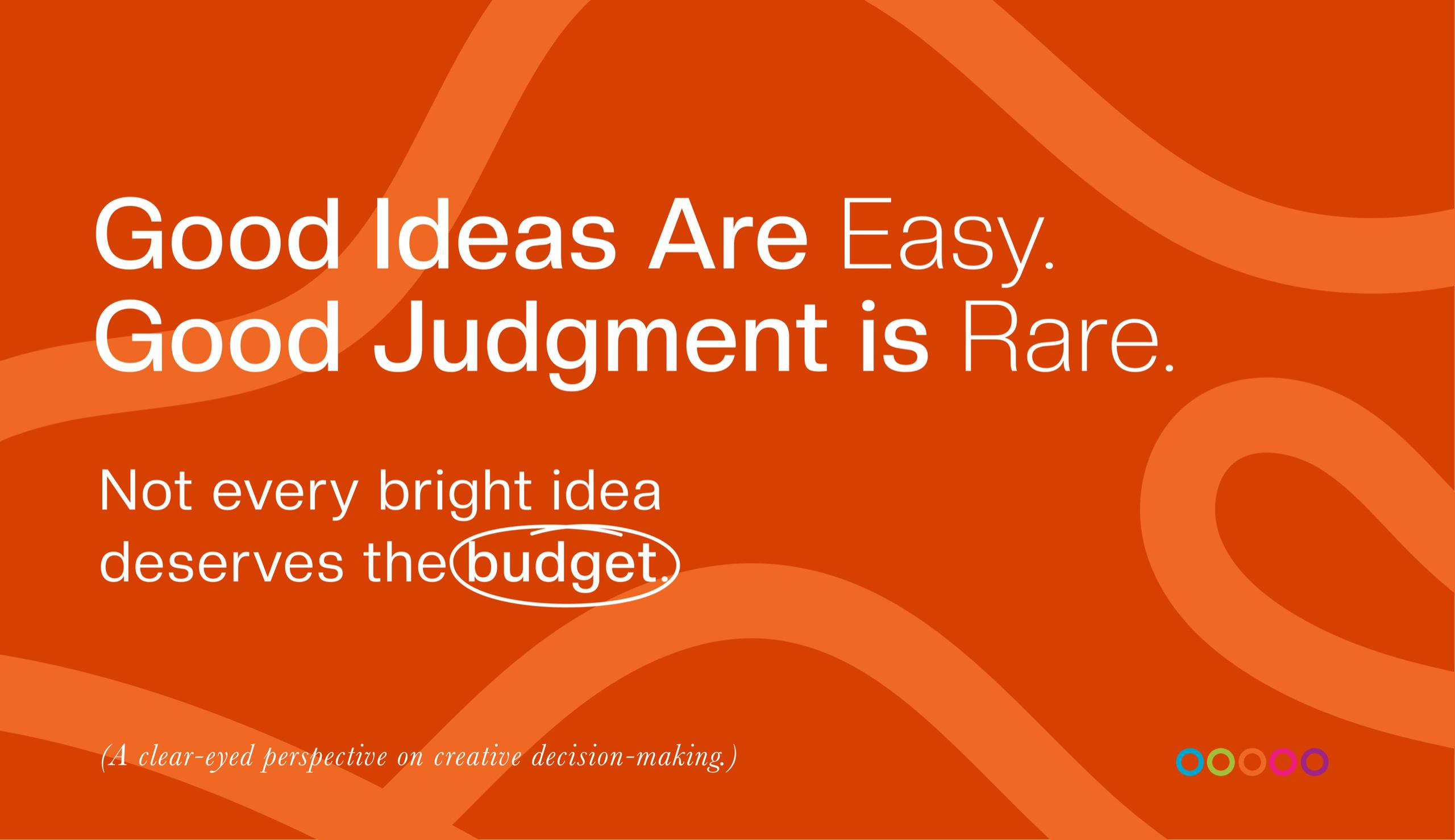Introduction: The Real Cost of the Wrong Call
Every brand wants to be seen as bold, original, and culturally aware. In response, creative teams are encouraged to generate ideas at speed and scale. Brainstorms overflow. Moodboards fill up. Concepts stack. And yet, a quiet problem persists beneath the noise: the consistent failure to separate viable ideas from unfit ones.
The result is not always a bad creative. In fact, it often looks exciting on the surface. But beneath that surface lies misalignment, between the idea and the brand, the message and the moment, the budget and the likely return.
You may think it's a creativity problem. No. It is a judgment problem.
The Myth of the Golden Idea
In many teams, the idea is treated as the end goal. Once something feels fresh or bold, there is a push to move it forward. Decks are built, vendors are called, timelines are set. The energy goes into production, not interrogation.
But creative success depends less on originality than on strategic fit. Without the discipline to evaluate when and why an idea should exist, teams fall into a cycle of launching campaigns that do little beyond ticking boxes. The idea may be good, but good is not the same as right.
The Three-Way Split: Build, Pause, Walk Away
Judgment introduces a pause between excitement and execution. It separates ideas into three clear categories: those to build, those to hold, and those to release entirely. The absence of this filtering mechanism leads to overloaded pipelines, unfocused messaging, and resource fatigue.
Creative teams that skip this process end up investing in ideas that had potential but no strategic grounding. The work may win applause in internal reviews, but offers little value once it reaches the audience. The opportunity cost compounds over time.
When Bold Ideas Fail, The Budget Pays
The most dangerous kind of failure is the one dressed as ambition. Large-scale campaigns often go to market with high confidence, high spend, and high expectations despite clear signs of misfit. Market readiness is ignored. Cultural signals are misread. Brand equity is stretched thin.
The consequences are measurable. Budgets are spent with little return. Teams burn out chasing the wrong goals. Trust erodes between creative and commercial functions. The issue is not lack of talent. It is the absence of critical evaluation between idea and investment.
Creative Direction Without Judgment Is a Problem in Disguise
Creative direction is often mistaken for taste. While taste may guide aesthetic choices, it does not offer a system for evaluation. Direction requires a set of standards: a clear view of purpose, audience, context, and the strategic role of each asset.
Without this structure, projects suffer from scope creep, miscommunication, and indecision. The team may appear busy, but momentum does not equal progress. Judgment introduces alignment. It keeps the work rooted in relevance, not personal preference.
Judgment Is Not Instinct. It Is a Developed Skill
There is a common belief that judgment is innate, that some people “just know.” But good judgment is built through exposure, repetition, and consequence. It emerges from studying outcomes, not intentions. From reviewing real-world performance, not internal praise.
Those who develop strong judgment do so by analyzing failure with the same energy they give to success. They pay attention to signals from culture, audience, and platform. They ask better questions, earlier. And they make fewer assumptions.
Asking Better Questions: The Core of Every Sound Decision
The difference between teams that execute well and teams that 'waste' potential often comes down to the questions asked at the start. Weak judgment leads with “what if?” Strong judgment begins with “why now?” and “what will this achieve?”
Clear thinking requires clear framing. Before the storyboard, before the budget, before the concept deck, there must be a rigorous interrogation of purpose. What problem does this solve? What space does this occupy? What response does this seek?
Without this clarity, creativity becomes guesswork.
What Strong Judgment Produces
We shouldn’t see creative judgment as something that kills ideas, but as a force that shapes better outcomes. When applied well, it brings focus to the process, aligning teams, reducing noise, sharpening messages, protecting budgets, and earning trust.
Most of all, it gives ideas the chance to become effective, not just interesting.
Build the Muscle, Not the Myth
Creative industries reward boldness. But boldness without clarity creates waste.
Judgment is the hidden infrastructure behind every campaign that holds up in the real world. It is time to treat it as a core creative skill, not a personal trait, not an afterthought, and never a luxury.









